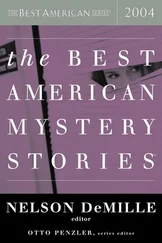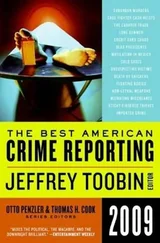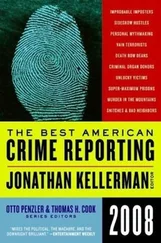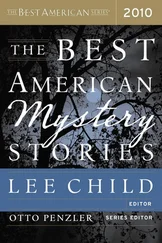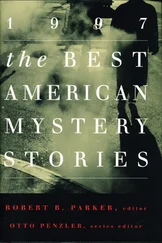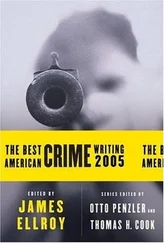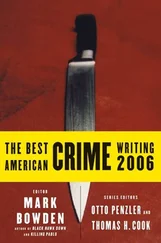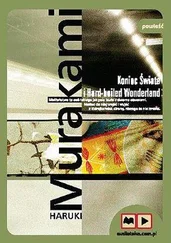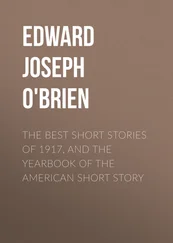With a few exceptions, the 1940s were a static decade for the hard-boiled crime story. Good work appeared in genre and other magazines, but most of it was formulaic and none of it broke any new ground. A number of talented writers made their debuts in the crime pulps, among them John D. MacDonald, Day Keene, and David Goodis; their primary contributions would come later, however, in the novel form. Easily the grittiest of the decade’s novels was Jonathan Latimer’s Solomon’s Vineyard (1941), a work so tough-minded and sexually explicit that no American publisher would take a chance on it in its original form; it was first published in England (where its dust-jacket blurb trumpeted: “It’s got everything but an abortion and a tornado,” neglecting to mention that one of the things it does have is necrophilia). Its first publication in the United States was not until nine years later, in a heavily expurgated paperback edition retitled The Fifth Grave. The original text did not see print in the United States until 1982, and then only in a limited edition of 326 copies from a small press.
A scattering of very good private-eye novels — and one seminal private-eye novel — were published in the 1940s. The very good ones include Norbert Davis’s fast and funny Mouse in the Mountain and Sally’s in the Alley, both published in 1943 and both featuring Doan and his Great Dane, Carstairs; Leigh Brackett’s Chandleresque No Good from a Corpse (1944); the first three Paul Pine adventures by John Evans (Howard Browne), Halo in Blood (1946), Halo for Satan (1948), and Halo in Brass (1949); the first of Wade Miller’s Max Thursday novels, Guilty Bystander (1947); and the first Lew Archer investigation by Ross Macdonald (Kenneth Millar), The Moving Target (1949).
The decade’s most influential hard-boiled detective novel is Mickey Spillane’s Mike Hammer debut, I, the fury. When this book was published in 1947, it had an immediate and profound impact on noir fiction. Action, sex, and vigilante justice were nothing new to the private-eye tale: Carroll John Daly (an admitted influence on Spillane’s work) had introduced this provocative mix more than twenty years earlier in his Race Williams melodramas, and other writers, including Hammett and Chandler, had utilized it with varying degrees of emphasis and success. But no one presented sex, violence, and the personal vendetta in such a heady stew as Spillane in I, the Jury: savagely, implacably, and with the most cold-blooded (or hot-blooded, depending on one’s perspective) denouement in the history of the genre — an ending guaranteed, as more than one critic has pointed out, to enrage any feminist.
I, the Jury, and such subsequent Mike Hammer novels as My Gun Is Quick (1950), Vengeance Is Mine (1950), and Kiss Me Deadly (1952), sold millions of copies and opened up the hard-boiled market to hundreds of mimics in the 1950s and 1960s. Spillane’s work, far more than that of any other writer, dictated which sort of crime fiction was to be published as paperback originals over the next twenty years. And his influence on hard-boiled mysteries as a whole, whether one likes the idea or not (many readers and critics find the Mike Hammer stories repellent), cannot be ignored or underestimated.
Fawcett Gold Medal was the first of the softcover publishers to specialize in original, male-oriented category fiction. When the first Gold Medal novels appeared in late 1949, editors Richard Carroll and Bill Lengel had already assembled (and would continue to assemble) a stable of some of the best popular writers of the period by paying royalty advances on the number of copies printed, rather than on the number of copies sold; thus writers received handsome initial payments, up to four times as much as hardcover publishers were paying. Into the Gold Medal camp came such established names as W. R. Burnett, Cornell Woolrich, Sax Rohmer, and Wade Miller; such first-rank pulp writers as John D. MacDonald, Bruno Fischer, Day Keene, David Goodis, and Harry Whittington; and such talented newcomers as Charles Williams, Stephen Marlowe, and Gil Brewer.
What the Fawcett brain trust and the Fawcett writers succeeded in doing was adapting the tried-and-true pulp formula of the 1930s and 1940s to postwar American society, with all its changes in lifestyle and morality and its newfound sophistication. (This, too, was what Spillane had done and would continue to do in his Mike Hammer novels.) Instead of a bulky magazine full of short stories, Fawcett published brand-new, easy-to-read novels in a convenient pocket-size format. Instead of gaudy, pulp-style cover art, Fawcett utilized the “peekaboo sex” approach to catching the reader’s eye: women depicted as either being nude (as seen from the side or rear) or showing a great deal of cleavage or leg or both, in a variety of provocative poses. Instead of printing hundreds of thousands of copies of a small number of titles, Fawcett printed hundreds of thousands of copies of many titles in order to reach every possible outlet and buyer. As a result, many Gold Medal novels, particularly in the early 1950s, sold more than a million copies each.
Fawcett and the best of its competitors — Avon, Dell, Popular Library, Lion — may have been selling pulp fiction, but it was an upscale variety. The novels they brought out were short (generally about 50,000 words), fast-paced, and action-oriented. They were well written, well plotted, peopled by sharply delineated and believable characters, spiced with sex, often imbued with psychological insight, and set in vividly drawn, often exotic locales. The best of these paperback originals were in fact the apotheosis of pulp fiction — rough-hewn, minor works of art, perfectly suited to and representative of their era. Notable individual titles include Jim Thompson’s harrowing excursion into the mind of a serial murderer, The Killer Inside Me (1952); John D. MacDonald’s The Damned (1952); David Goodis’s Street of the Lost (1952); Gil Brewer’s A Killer Is Loose (1954); Harry Whittington’s Brute in Brass (1956); and Jack Dillon’s Hemingway pastiche, A Great Day for Dying (1968). A number of long-running noir series were also launched and developed as paperback originals during the 1950s and 1960s; among these were the Eighty-seventh Precinct novels by Ed McBain (Evan Hunter), begun with Cop Hater (1956); Chester Himes’s Harlem police procedurals, featuring Coffin Ed Johnson and Grave Digger Jones and begun with For the Love of Immabelle (1957); and the antihero Parker created by Richard Stark (Donald Westlake) and begun with The Hunter (1962).
While the bulk of the softcover originals published in the 1950s and 1960s were concerned with violent crime of an interpersonal nature, a percentage of them — and a larger percentage of hardcover novels and short stories — embraced larger themes: Senator Joseph McCarthy’s anti-Communist witch hunt, widespread fear of nuclear annihilation, rampant urban juvenile delinquency, drug addiction, and the threat of organized crime (the hearings held by Senator Estes Kefauver’s Special Committee to Investigate Organized Crime in Interstate Commerce, which were nationally broadcast on radio and television in 1950 and 1951, opened the American people’s eyes not only to the threat but also to the underworld’s deep and longstanding ties to local political officials). In response, heroic struggles against the Red Menace were the stuff of such novels as Mickey Spillane’s One Lonely Night (1951); grim accounts of juvenile gangs filled Hal Ellson’s Tomboy (1950), Benjamin Appel’s Life and Death of a Tough Guy (1955), and Harlan Ellison’s Bumble (1958); drug addiction was examined in Ellson’s The Golden Spike (1952) and Alexander Trocchi’s Cain’s Book (1960); the effects of organized crime were chronicled in Louis Malley’s Horns for the Devil (1951), Harry Grey’s The Hoods (1952), and Appel’s The Raw Edge (1958). Many hard-boiled novels — and such documentary-style films as The Captive City (1951) and Big Jim McLain (1952) — treated their subject matter in highly sensationalized and inflammatory fashion, in keeping with the somewhat frenzied atmosphere of the period. The same was even more true of the hard-boiled short story.
Читать дальше

